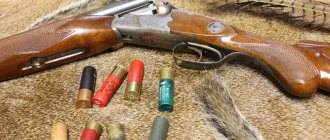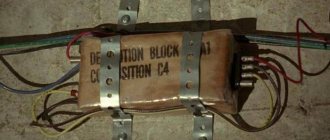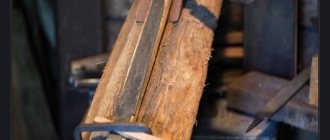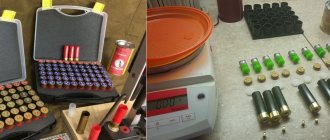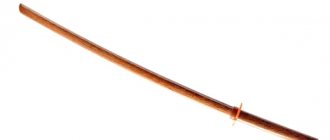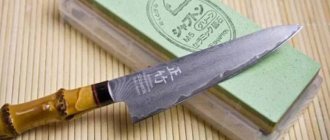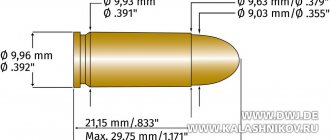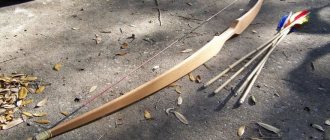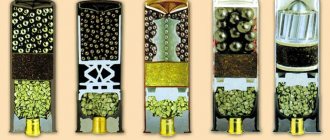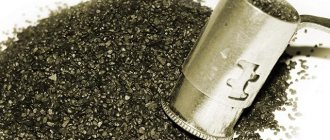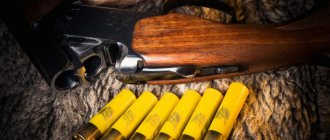Nowadays, 12 gauge hunting rifles are among the most common. There is a huge variety of 12-gauge cartridges on sale from a lot of manufacturers, but according to reviews from many hunters, they consider the best to be those that they assemble themselves, the so-called “roll-your-own” cartridges. This is due not only to the fact that “rolling a cigarette” is cheaper, but the savings are sometimes multiple and this is a very important factor. The main reason is that just as each gun has its own characteristics, so each hunter has his own shooting style and hunting characteristics in certain conditions. It is the self-rolling cartridge that makes it possible to choose the optimal combination of all its components, tailored to the individual characteristics of each.
Loading hunting cartridges, on the one hand, does not require any complex equipment, but on the other hand, a number of hunters equip entire workshops with special presses and equipment for this purpose at home. The latter affects primarily the speed and number of loaded charges.
We will now look at how to load 12 gauge cartridges and what is required for this. Let's go from simple, with a minimum of special equipment, to complex.
Why load your own ammunition?
First, let's try to figure out why people even load their own cartridges. After all, modern gun stores offer a wide range of ammunition for every taste and budget. That’s right, but don’t forget about the following nuances that most often encourage people to load shells on their own:
- Desire to save money. No matter what anyone says, loading your own cartridges is much cheaper than ready-made ammunition from a store. The cost of the main elements of the cartridge is relatively low, and the finished projectile is subject to an excise tax stamp, as a result of which its price also increases. However, if the hunter loads the ammunition himself, he will not have to pay sales tax. As a result, a person saves half, or even 70% of the amount that could have been spent on purchasing cartridges.
- The desire to achieve better ballistic performance. Magazine cartridges are versatile. For example, when choosing ammunition for duck hunting, you may encounter different weights of gunpowder and shot, and even different numbers of striking elements. However, the accuracy of the battle in almost all cases will be 50-60% at a distance of 35 meters. But what if you need to shoot from a distance of 50 meters? That's right, you just need to experiment a little with different attachments.
- The desire to obtain unique ammunition, tailored for specific purposes. Let's say you have a shotgun with a 76mm chamber, but you don't want to use a full load of shot and powder because you just want to practice skeet shooting. In this case, you can equip the cartridge case yourself, using a minimal amount of gunpowder and shot. Also, many hunters may not be happy that the factory cartridge contains a wad that is too thick or thin.
- The desire to obtain the highest quality ammunition. There is an opinion among inexperienced hunters that a cartridge from a trusted manufacturer is the highest quality and best. However, we hasten to disappoint you. The fact that the ammunition does not explode inside the barrel does not mean that it is ideal. A high-quality cartridge is considered to be the one that is best suited for firing from your weapon. Some shotguns prefer plastic ammunition, others prefer brass, and still others prefer fast-flammable powder.
- Lack of access to a gun store. Sometimes people switch to “roll-your-own” guns also because they simply live far from the city where there is a gun shop. In this case, the only way out is to equip the cartridges yourself at home. And such a process is resorted to not only by residents of the Far North, as one might initially think, but also by many hunters from the villages who simply do not have transport to get to the city.
And these are just the main reasons that encourage people to start loading their own cartridges. You should also not forget about the banal desire to learn something new, as well as the fact that there is an unspoken rule among hunters: if you don’t know how to make ammunition yourself, then you cannot be considered a professional.
General recommendations for selection
Regardless of the brand and caliber, a good gun should have the following characteristics:
- Fit is how well a gun fits the hunter's body type. When raising the gun, the shooter should almost automatically aim it at the target. The barrels of the “wrong” gun will fall above or below the target, or will simply look to the side, which will require extra time for aiming, this often leads to misses when shooting at a moving target.
- Balance. Balance is found by hanging the gun. If the breech of the barrels is no further than 70mm from the center of gravity, the balance is good. You can determine the balance by weighing the gun with and without a forend, the ratio should be 2 - 2.2.
- Posadist - the mass of the gun should be concentrated
Necessary equipment
If you decide to figure out how to equip a cartridge with your own hands, then first you will have to understand the list of necessary equipment, as well as its purpose. We strongly do not recommend looking for various “alternatives” to these tools, since loading cartridges is a very delicate process that does not tolerate a “clumsy” attitude.
Powder and shot scales
First of all, you should make sure that you have a special scale at home for weighing shot and gunpowder. This can be either an electronic device (pharmacy scales are a prime example) or a mechanical model, which comes complete with special weights. In any case, the key requirement for the device is its measurement limits - from 0.01 grams to 50 grams. If the device does not allow you to measure weight in a similar range, then you cannot count on the fact that you will be able to use it to create a good cartridge with an optimal amount of gunpowder and shot.
Dispenser
A dispenser, or in simple words “measurement”, is a mandatory attribute for any hunter who decides to equip ammunition on his own. You can work with scales, but this is not very convenient if we are talking about equipping several dozen rounds of ammunition. It will be much easier to acquire a special beaker, which will allow you to measure the optimal amount of gunpowder and shot required for 1 charge. After this, the equipment process will speed up by 3-5 times, since you will not have to measure the weight on the scales all the time.
However, there is one important nuance: we do not recommend using measurements from factory manufacturers. The fact is that in most cases they are incorrectly calibrated for the amount of gunpowder, because a lot depends on the type of flammable powder, as well as its manufacturer. That is, if the plant produced an Irbis gunpowder dispenser, this does not mean that it will show the optimal mass for the Falcon. So it’s best to make a dispenser yourself, based on your preferences. For example, you can simply cut off the spent cartridge case.
Navoynik
Another mandatory tool needed to load cartridges with your own hands is a gun. It is a small plastic tube with a handle-holder at the end. This tool is used to insert a spacer into the cartridge case, which should be between the shot and the gunpowder. If you slightly round the end of the gun, it will act as a cone intended for straightening spent cartridges - folder (paper) or plastic. Such a tool is cheap, and it will be difficult to overestimate the benefits of it.
Sidorenko universal device
In the absence of this device, you will not be able to equip the sleeve, since the UPS is designed to fit the primer (igniter) into a special socket, which is located on the head of the sleeve. You can try to dent or hammer the metal part into the plastic as much as you like, but this will almost certainly lead to the cartridge not firing. Sidorenko’s device is also considered universal because it can be used to remove used primers from spent cartridges (useful for even greater savings).
Without UPS it is almost impossible to load a cartridge
Rolling tool
Another important device is a device designed for tightening sleeves. Depending on what ballistic projectile is used in the ammunition (bullet, buckshot or shot), the rolling matrix will be different. For example, for shot shells, the overlap twist method is used, which is a special plastic round or star. But for bullet ammunition, a classic matrix is used, which simply clamps the plastic at the edge. So the tool is no less important than the UPS, and you should not neglect its purchase.
Funnel
A special nozzle that has a hole 18.5 millimeters in diameter (just for the 12 gauge cartridge). It is put on the top of the cartridge case to make it easier to pour shot and gunpowder inside. You can neglect purchasing such an element, but in this case you will need a very small spoon to work, and the speed of the equipment will drop significantly. If you use a funnel, then even an ordinary teaspoon will be suitable for pouring shot and gunpowder, not to mention special beakers.
Die cutting
This device is useful for those who prefer to make wads for cartridges themselves, using wine or champagne corks, polystyrene foam or thick felt. The tool is a small brass cylinder with sharpened edges that cuts soft material quite easily. So, if you don’t want to buy wads, and you have a lot of unnecessary material lying around the farm from which you can make them yourself, you should think about purchasing a die cutter - it will pay for itself in a couple of hundred manufactured cartridges.
Gauge ring
This tool is used for one purpose - checking the accuracy of the shape of the cartridge after it has been fully loaded. Often, novice hunters overly diligently roll the edges of the cartridge case, as a result of which the ammunition expands in the area where the shot is located. Using such a projectile for hunting is not only dangerous, but also often makes no sense, since it is unlikely to enter the chamber. However, a calibration ring can be used to check whether the cartridge meets quality standards. If not, just re-roll it a little less intensely.
Chuck elements
We've sorted out the tools that will be needed to load the cartridges. Now let's figure out what basic elements the ammunition consists of, so that in the process of studying further theoretical information you will not have even more questions.
Sleeves
Any cartridge (be it a projectile for a smooth-bore or rifled weapon) consists of a cartridge case - a special cylindrical container in which gunpowder and striking elements are placed. Here are the three main types of cartridge cases that are used most often by hunters:
- Paper (folder). Such cartridges cost mere pennies, but they cannot be reloaded. When fired, the cylinder almost completely falls apart, and sometimes you even have to pick it out of the barrel. In addition, paper absorbs moisture quite strongly, so it is recommended to use cartridges a few days after loading or store them in isolation in a dry place. Of course, using cartridges in the rain is out of the question - the gunpowder simply will not ignite.
Folder sleeves can only be loaded once
- Plastic. The most common type of cartridge case, which is most often used in hunting ammunition, is a kind of “golden mean” between expensive brass and cheap cardboard. The undoubted advantage of such a cylinder is that it absolutely does not allow water to pass through and does not corrode. With proper handling and using the recommended amount of powder, one cartridge case can be used for up to 10 shots - you just need to clean it properly and replace the primer.
- Brass. Despite the fact that such a sleeve is durable and reliable, it has its drawbacks, which is why hunters use them in the manufacture of cartridges very rarely. Firstly, such ammunition weighs an order of magnitude more than usual. Secondly, it corrodes quite quickly at high air humidity. Thirdly, rolling will require a special tool. And metal cylinders are much more expensive than plastic ones, so you can only buy them on holidays.
What type of sleeve to use is up to you. However, we personally recommend paying attention to the plastic option. It will be easier to work with (rolling will not cause problems) and you can use such a container several times in a row.
Capsules
The primer is a small metal cylinder that is located at the bottom of the cartridge case. A small amount of gunpowder is poured into it from above, which is combined with the general weight. After the firing pin hits the primer, the temperature of the metal rises sharply and the gunpowder ignites. It is almost pointless to use a spent primer, since it will almost certainly misfire. So to equip cartridges yourself, you will have to stock up on a couple of hundred of these elements. Don't worry about the shelf life - they last from 6 to 12 years.
It is also worth noting that capsules are divided into two types: “. The second is considered the most popular among hunters, as it is used for equipping plastic and folder cartridges. The “centrifuge” will only be effective for equipping brass cartridges. However, no matter what type of capsule you choose, remember that it is best to store them in airtight packaging. In this case, the likelihood of corrosion on the metal will be minimized.
Wads
As mentioned earlier, you can make a wad yourself or purchase a ready-made version. This material serves as a seal and is located between the shot and the powder, so it must be made of a flammable material. The less dense the wad is, the sharper the fight will be. Among the materials that are most often used to make seals at home, the undisputed favorites are foam and cardboard. In stores you can find wood fiber and felt wads.
Gaskets
In addition to the wad, cartridges also often contain thin gaskets. It is impractical to make them yourself, since in hunting stores they are sold at 150-200 pieces per package, and cost mere pennies. Thanks to the presence of such an element in the cartridge, the shot is smooth and soft, so you should not neglect them. Spacers can be placed between the wad and the shot, as well as between the wad and gunpowder. You can experiment with their thickness to make the shot sharper or softer.
Powder
A highly flammable substance that serves as a source of energy in any cartridge. Modern ammunition can use smoky or smokeless powders. The latter variety is the most popular among hunters, however, it costs accordingly. The reason for this is simple - the absence of smoke during the shot ensures that the barrel channel will not become dirty so quickly. At the same time, many hunters prefer aesthetics - the spectacle of smoke billowing from the barrel after a shot.
Damaging element
The last element of any cartridge is a ballistic projectile, which is most often lead shot, as well as buckshot or a bullet - the choice depends entirely on what animal you plan to hunt. For example, shot, as a rule, is used for shooting at game birds, since it has a large dispersion radius. The bullet is suitable for hunting dangerous predators, as it allows you to shoot from afar. Buckshot is useful for hunting large ungulates, such as wild boar or elk.
Calculation of projectile and shot weight
Depending on the mass of the smoothbore gun, the weight of the projectile can be different. Here is a small table that will allow you to calculate this indicator for weapons of different calibers:
| Gun caliber | Maximum projectile weight (percentage of total gun weight) | Minimum projectile weight (percentage of the total weight of the gun) |
| 12 | 1/90 | 1/100 |
| 16 | 1/100 | 1/112 |
| 20 | 1/112 | 1/136 |
| 28 | 1/136 | 1/148 |
| 32 | 1/148 | 1/156 |
Once the weight of the projectile has been determined, it is necessary to calculate how much powder charge will be required for the shot or bullet to have the best ballistic characteristics. A calculation table designed for gunpowder from different manufacturers will also help you with this:
| Brand of gunpowder | Maximum weight (ratio of powder mass to projectile weight) | Minimum weight (ratio of gunpowder mass to projectile weight) |
| "Falcon" | 1/5 | 1/6 |
| Smokeless "Falcon" | 1/16 | 1/18 |
| "Leopard" | 1/17 | 1/18 |
| "Sunar" | 1/16 | 1/17 |
Let's look at a small example to make it more clear what we are talking about. Let's assume that we have a 12 gauge shotgun that weighs 3000 grams. This means that the minimum weight of a ballistic projectile for a cartridge must be 30 grams (1/100 of the weight of the weapon). In this case, the minimum weight of the smoky “Falcon” will be 5 grams (1/6 of the shot weight).
Equipment order
Well, are you ready? It's time to start loading your own cartridges. However, do not forget to prepare your workplace before doing this. A regular table with plenty of free space is best suited for this purpose. Also, do not forget that it is important to be careful and attentive during the work process.
Installing the capsule
First you need to insert the primer into the cartridge. If you are using an already fired cartridge case, be sure to make sure that there are no defects in the igniter hole, otherwise the cartridge case will wear out during the firing process. The capsules must be installed using the Sidorenko universal device. It is important to insert the parts evenly so that there are no distortions. Some hunters bury the capsule 0.1-0.2 mm deep. However, this practice is relevant only if the size of the striker allows this to be done.
To remove punctured primers from spent cartridges, also use the UPS. For this purpose, the device has a special needle-type device. It is enough just to straighten the “neck”, after which the spent capsule is quite easily removed.
Loading gunpowder
Once the new primer is in place, you can begin loading powder into the case. To do this, we first calculate the required weight (or follow the recommendations indicated by the manufacturer on the packaging), and then measure the required amount using electronic scales. We insert a funnel into the cartridge and carefully pour gunpowder into the cartridge case. Don’t forget to compact it afterwards using a sealer. However, excessive force will also be unnecessary, so use only your hands (several kilograms of pressure).
Installation of gaskets and wads
Once the gunpowder is poured in and pressed in, you need to compact it using a wad, which you made yourself by die-cutting or purchased at the store. If you use a felt seal, be sure to place a cardboard pad under it to prevent the wad from mixing with the gunpowder. 1 to 2 gaskets are also installed on top of the seal (depending on the thickness of the material). To make it easier to send wads and gaskets inside the cartridge, you can use a navoynik. However, do not overdo it (after all, this is a rammer, not a press).
An important note: in brass cases it is recommended to use wads that are 2-4 calibers larger than the cartridge. That is, if the sleeve has a size of 15.6 mm (16 gauge), then the wad should be 18.5 mm in diameter (12 gauge). This must be done due to the fact that in metal casings the wads fall inward over time, thereby forming a layer of air between the gunpowder and the shot. There is no need to carry out such manipulations with plastic and paper sleeves, since the wads in them adhere well to the rough walls.
Loading Fraction
Once the wad and spacers are installed, you can begin loading shot. So that you do not have to constantly measure the required amount of the damaging element on the scales, it is recommended to use special measurements. As for purchased bullets, detailed instructions for loading them are described on the paper that comes with the ballistic projectile. Typically the weight of one 12 gauge bullet is 32 grams (±2 grams). That is, in order for the bullet to have good ballistics, at least 6 grams of Sokol gunpowder will be required.
Rolling the chuck
After all the main elements are placed inside the sleeve, it is necessary to proceed to the final stage of the equipment - rolling the sleeve. This is done so that shot or buckshot does not spill out during the transportation of ammunition. Folder sleeves are the easiest to roll, since you just need to install a cardboard spacer and then screw the edges of the cylinder so that it does not fall out. The same can be done with plastic, but most often plastic sleeves are rolled using an asterisk.
You can roll brass sleeves using a special machine, which will cost a pretty penny. Plasticine or paraffin is usually used as a gasket. You can also buy special plastic plugs from the factory or try to glue the gaskets with glue. Be that as it may, you will have to suffer with rolling the brass.
Ammunition marking
After the cartridges are rolled, it is recommended to mark them, so that later you do not forget what kind of shot or what weight of gunpowder is used in certain cartridges. You can do this using a regular felt-tip pen in any way convenient for you. Also, for large shot (3-1 numbers) you can use red sleeves, and for smaller shot (7-4 numbers) - blue. You can also purchase special stickers that are simply stuck on the sleeve (all the necessary information is already printed on them).
Powder weights Sokol
Weight standards are a fundamental factor in the performance and serviceability of the cartridges and gun used. Unfortunately, the factory information written on the Falcon label has long been inconsistent with the requirements of current weapons. The latest standards were calculated back in Soviet times, and of course, the standards over the past decades have long been outdated. The recipe for making gunpowder, as well as the process of making weapons, have gone far ahead, so the manufacturer’s motives for using outdated recommendations remain unclear.
However, hunters and shooters, through experimentation and testing, were able to accurately determine the correct proportions.
So, ready-made examples of attachments:
- 12 gauge – (shot 28 grams, gunpowder 1.9 grams), (shot 32 grams, gunpowder 2.1 grams), (shot 35 grams, gunpowder 2.25 grams), (shot 40 grams, gunpowder 2.4 grams) ;
- 16 gauge - (shot 28 grams, gunpowder 1.6 grams), (shot 29 grams, gunpowder 1.7 grams), (shot 30 grams, gunpowder 1.8 grams);
- 20 caliber - (shot 22 grams, gunpowder 1.4 grams), (shot 23 grams, gunpowder 1.5 grams). (shot 24 grams, gunpowder 1.6 grams).
Safety precautions
When loading cartridges with your own hands, do not forget to follow basic safety rules. Otherwise, the process may turn out badly, or during the hunt not only the weapon, but also its owner will suffer. Here are the main points that are strictly required to be observed:
- Place matches, lighters and other items that could ignite gunpowder away from the table. Of course, smoking in the same room with gunpowder is also strictly prohibited. One wrong move can lead to severe burns and loss of property.
- Try to make sure that no one disturbs you while loading cartridges. Otherwise, you risk making a mistake in your calculations. But just a few extra grams of gunpowder in one cartridge can lead to tearing of the gun barrel.
- Do not exceed the maximum permissible weight of shot and gunpowder (you can use the tables presented earlier for calculation). Don't tempt fate by trying to achieve better ballistic performance.
- Do not use cartridge cases or primers with defects for equipment. This can be fraught not only with misfire, but also with rupture of the chamber. And it’s also unsafe to pull misfired ammunition out of the barrel, so it’s not worth drawing.
- Do not use gunpowder that is past its expiration date. Such material may ignite with a delay of several seconds. And if the shooter removes the misfired cartridge too early, he risks losing his fingers.
- Don't forget to label your cartridges. Unfortunately, many hunters neglect this rule, and after a few months they forget which cartridge was intended for what purpose.
- Use the gauge ring to check the cartridge's tightness. Many beginners press the shot too hard, resulting in the ammunition becoming unsuitable for shooting. Even if you force it into the chamber, such shooting will not lead to any good.
Loading 12 gauge ammunition is not as difficult a task as it initially seems. The most important thing is to acquire all the necessary tools (rolling machine, powder dispenser, etc.), and also follow certain instructions. And if you get used to this kind of work, you can forever save yourself from the need to purchase expensive cartridges in a store.
The most common mistakes
Some novice hunters do not have the necessary equipment in their arsenal to load cartridges and try to get out of the situation using any available materials. This concerns primer clogging. The capsule can be fixed efficiently and correctly only on a special machine.
Violation of the proportions of the charge and the projectile can lead, at best, to low performance of the gun, and at worst, to powerful recoil or an explosion that kills the shooter. The proportions of gunpowder and projectile must be calculated individually for a specific gun based on its weight.
The use of cartridges with defects and deformations when loading can lead to a decrease in combat performance, so such cartridges must be rejected. When fired, the cartridge can simply explode, releasing a large amount of energy and gas that moves backward. The shooter or the weapon may be seriously injured.
Insufficient or excessive crimping of the cut of the neck of the sleeve can lead to deformation of the walls of the cardboard or plastic sleeve, which is unacceptable. Insufficient crimping will create serious problems when shooting. The recoil of a shot increases several times.
